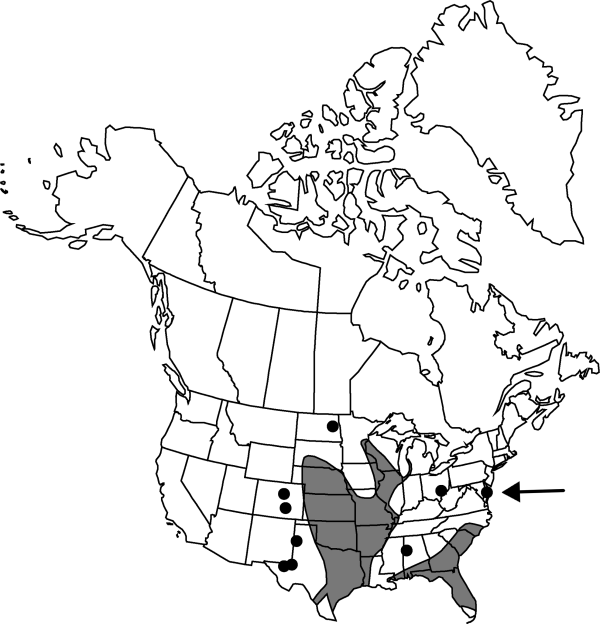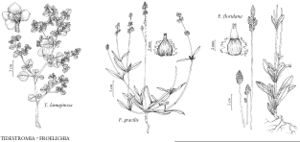Froelichia floridana
in A. P. de Candolle and A. L. P. P. de Candolle, Prodr. 13(2): 420. 1849.
Plants annual; taproots semi-woody. Stems 1, erect or ascending, sometimes procumbent, simple or sparsely branched (rarely much-branched) from base or above, stout, to 18 dm, puberulent or tomentulose with short, viscid, whitish or brownish hairs. Leaves principally on proximal 1/3 of plant, petiolate; blade lanceolate to oblanceolate, oblong, or linear, largest leaves 3.8–11.2(–21) × 0.5–3.8(–4.2) cm, base attenuate to cuneate, apex acute to obtuse, canescent to subscabrous adaxially, sericeous-tomentose abaxially. Spikes dense, much-branched, apex often pyramidal, flowers arranged in 5-ranked spiral; bracteoles stramineous or blackish, pubescent with small tufts distally. Flowers 4–6 mm; perianth lobes, greenish white to pinkish, oblong, apex acute; filament lobes slightly to greatly recurved distally, stramineous to pinkish, apex acute. Utricles flask-shaped, 5 × 4–5 mm, with irregularly dentate lateral wings, both surfaces of perianth with distinct spines or tubercles. 2n = 58 + 2.
Phenology: Flowering summer.
Habitat: Open sand prairies, edges of woodlands in sandy soils, roadsides, railroad rights-of-way
Distribution

Ala., Ark., Colo., Fla., Ga., Ill., Ind., Iowa, Kans., Ky., La., Md., Mich., Minn., Miss., Nebr., N.C., N.Dak., Ohio, Okla., S.C., S.Dak., Tex., Wis., West Indies, introduced in Australia.
Discussion
Froelichia floridana ranges from broad-leaved stout herbs surpassing 1 meter in height to much-branched plants forming bushes to 2 meters in diameter and single-stemmed, erect herbs 1 dm in height. Much of the variation in the species has been difficult to ascribe to either geographic or ecologic differences and reflects inherent genetic variability and wide environmentally induced plasticity. Although specialists and taxonomists have implied the existence of well-delineated morphologic taxa with a strong geographic correspondence, this is not always true, and, in fact, one encounters typical specimens of any given variety sporadically throughout the range of the species.
Some variability in Froelichia floridana is clearly attributable to geography, principally in terms of general morphologic trends. There is a cline toward long, narrow, almost linear leaves as one moves east along the Gulf Coast and into Florida. This would culminate in the little-known var. pallescens Moquin-Tandon, a linear-leaved form (leaf length more than eight times width) from peninsular Florida. Additional variation ascribable to geography is observed in plants traditionally included in F. drummondii, these being large, stout plants with broader leaves, more obtuse leaf apices, and more densely fulvous pubescence on the abaxial surfaces of leaves. Plants of this form are generally restricted south of the Brazos River and continue to the southern extent of the range in Kenedy County, Texas. Further work examining this variation using micromorphology or molecular markers may elucidate a reliable means to identify intraspecific taxa within F. floridana.
